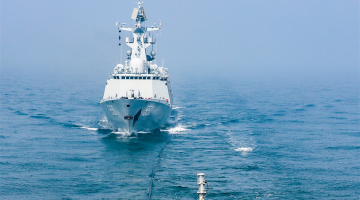FL-62 simulates air flow around aircraft before real flight test
The nation's newest wind tunnel will shape China's future fighter jets and boost their efficiency, according to its maker and Chinese military experts.
Approved for construction by the State Administration of Science, Technology and Industry for National Defence in 2012, the FL-62 wind tunnel will be completed "very soon," according to a statement by the Aviation Industry Corporation of China released on its WeChat account on Tuesday.
Weighing 6,620 tons, the 17,000-cubic-meter FL-62 is China's first-ever large continuous transonic wind tunnel, its maker said in the statement.
Unlike the unstable and inconsistent airflow of previous Chinese wind tunnels, the FL-62 is able to provide a stable wind field and more precise measurements, Song Zhongping, a military expert and TV commentator, told the Global Times on Wednesday.
In this way, many unnecessary trials and errors can be avoided in the designing of a new aircraft, significantly reducing its development period, Song said.
A wind tunnel is used to simulate the airflow around an aircraft before it conducts a real flight test.
The results help shape and improve the aerodynamic design of the aircraft, the statement said.
The statement dubbed the FL-62 a "pillar of a great power," calling it a fundamental and strategic facility crucial to China's aviation industry.
The corporation noted specifically in the headline of the statement that the FL-62 will decide the shape of China's future fighter jets and will serve as a backbone for China's development of cutting-edge aircraft.
With the help of the tunnel, China's sixth generation of fighter jets can be more aerodynamic and stealthy than ever before, Song said.
China's sixth generation fighters will include artificial intelligence, have multiple unmanned aerial vehicles under their command and be equipped with directed-energy weapons like lasers and high-power microwaves, Song said.
China's most advanced fighter jet, the J-20, was developed by Chengdu Aircraft Industrial (Group) Company, a member of the Aviation Industry Corporation of China.
The J-20 was delivered to the People's Liberation Army in 2017.
In addition to the development of new fighter jets, the wind tunnel can also contribute to space research.
The tunnel is expected to see use in fields like transportation, construction, new energy and environmental protection, the statement reads.









